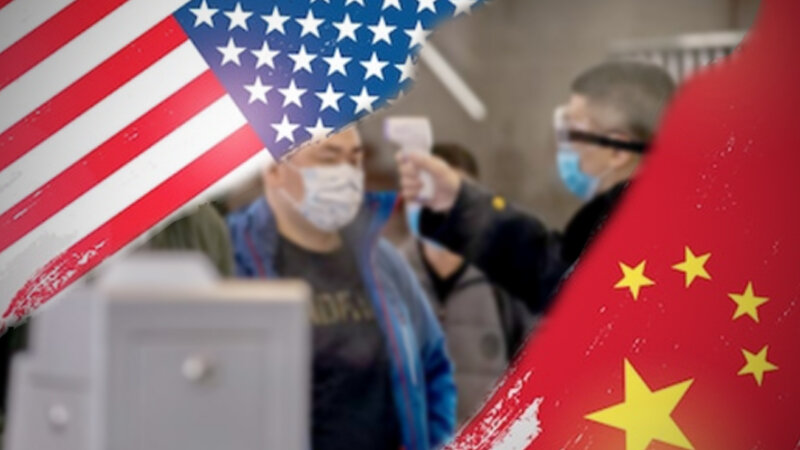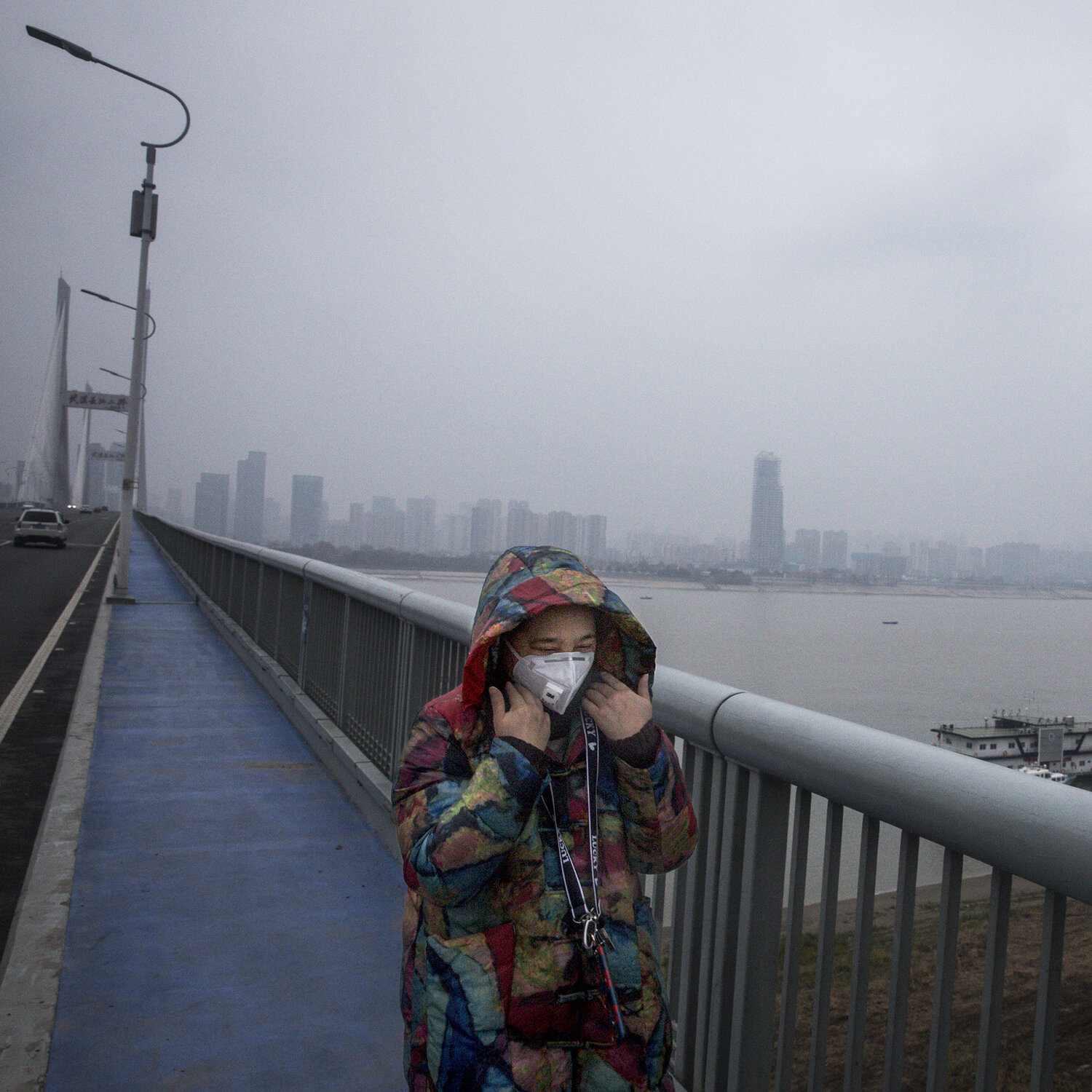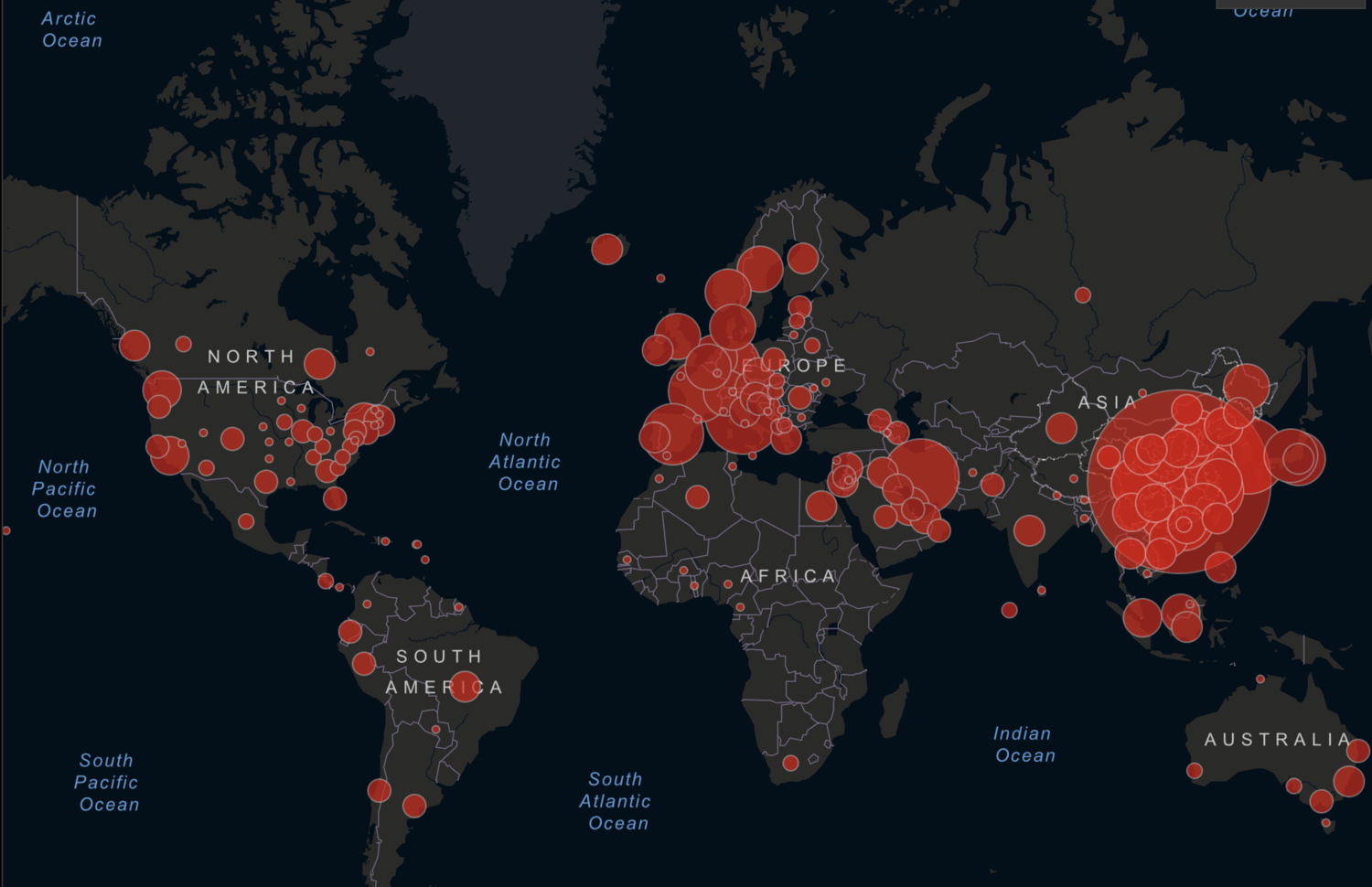By James L. Regens and John S. BeddowsJune 01, 2020
 “If a pandemic disease emerges, it probably will first occur in an area marked by high population density and close association between humans and animals, such as many areas of China and Southeast Asia, where human populations live in close proximity to livestock.”
“If a pandemic disease emerges, it probably will first occur in an area marked by high population density and close association between humans and animals, such as many areas of China and Southeast Asia, where human populations live in close proximity to livestock.”
—U.S. National Intelligence Council, State of the World 2025[1]
The COVID-19 pandemic is taking place during a transitional period in geopolitics.[2] The survival of liberal internationalism and America’s leadership role—related but distinct geopolitical concerns—have become increasingly questioned as the pandemic has progressed. Liberal internationalism has been based on expanding trade and increasing globalization under a system tied to western-centric norms and values. From 1945 through the first two decades following the Cold War’s end, the United States was the primary, but not sole, advocate for this approach to structuring political and economic relations. In essence, liberal internationalism provided the basis for a relatively stable, multi-decade geopolitical equilibrium grounded in free market economies. The world today, however, is much different politically, economically, socially, and culturally than it was in 1991. As a result, given changes in the global order over the past 30 years, is liberal internationalism as it has existed since World War II possible without continued American pre-eminence?[3]
U.S. and China in the time of COVID (The Nation Thailand)
Sino-American rivalry, ascending Chinese economic and military power, growing disenchantment in numerous countries with the consequences of globalization, and U.S. global retrenchment under the Trump administration have amplified debate within the U.S. and concern abroad—especially on the part of U.S. allies—about the future of liberal internationalism and the global order. From a strategic standpoint, this question provides a lens through which to assess plausible geopolitical implications of the COVID-19 pandemic. The cliché of a globalized, borderless world in which national borders drawn on maps no longer matter is rendered hollow by the reality that, although SARS-CoV-2 spread is not prevented by political boundaries per se, the effectiveness of the overall response to the COVID-19 pandemic is contingent on decisions made within but resonating far beyond those boundaries. National strategies for mitigating the onset and the consequences of COVID-19 resonate far beyond national borders. Decisions within those states may prolong or shorten the acuteness of the pandemic within their borders, contain or allow it to spread beyond their borders, and in so doing prolong or reduce the period of global economic slowdown, political flux, and social disruption. This article summarizes the evolution of the pandemic as a threat to global stability and analyzes its geopolitical implications.
National strategies for mitigating the onset and the consequences of COVID-19 resonate far beyond national borders.
Evolution of the Problem
The first case of COVID-19 presented in China on 17 November 2019. Eight more cases of viral pneumonia of unknown origin were diagnosed there in early December 2019. Medical personnel immediately began efforts to characterize the virus and respond to the outbreak. Genomic sequencing determined the illnesses were caused by infection from SARS-CoV-2, a coronavirus that originated in wildlife (i.e., animal-to-human transmission followed by person-to-person).[4] The most plausible natural route for initial zoonotic transmission, given the SARS-CoV-2 sequence, is via live horseshoe bats (Rhinolophus sinicus) which are often sold for consumption in exotic wildlife wet markets that proliferate throughout China.[5] Alternatively, it is possible that a breach of laboratory containment occurred in the biosafety level 4 (BSL-4) facility at the Wuhan Institute of Virology or the biosafety level 2 (BSL-2) facility at Wuhan Center for Disease Control and Prevention, which study bat coronaviruses.[6] The China Center for Disease Control notified the World Health Organization on 31 December 2019 about pneumonia cases of unknown etiology, released the SARS-CoV-2 sequence to the international community on 10 January 2020, and confirmed person-to-person transmission to the World Health Organization on 20 January. At this point, coherent albeit preliminary scientific and medical understanding existed that a novel and highly contagious betacoronavirus with greater virulence than influenza was being transmitted from person-to-person by aerosol inhalation. That understanding should have informed nations’ risk mitigation decisions, but early, decisive action failed to materialize globally at this stage in the pandemic’s evolution.

A woman on the Yangtze River Bridge in Wuhan, China (Getty)
The December 2019 outbreak was initially localized to Wuhan in China’s Hubei province, but morphed quickly into a global pandemic.[7] Over the next three months, the total number of infections increased rapidly emulating exponential growth:
67 days to reach 100,000 confirmed cases of infection worldwide;
Only four more days were needed to go from 200,000 to 300,000 cases;
By 26 March, the total confirmed positive cases reached 531,860 infections and 24,057 deaths reported by 160+ countries or territories and the U.S. presumably overtook China as the country with the most confirmed positive cases and deaths; and
Between 26 March and 22 April, the global total increased to 2,603,147 confirmed cases (+ 389.4%) with 180,784 fatalities (+ 651.5%).[8]
Actual prevalence and mortality, inevitably, are higher than the reported data during a pandemic especially when it is a new disease like COVID-19. The gap comes from testing backlogs and shortages, underreporting of mild cases, non-reporting of asymptotic infections, misattribution of cause of death, and the likelihood that some countries are concealing the magnitude of their outbreaks. National reporting discrepancies, even if not nefariously motivated, undermine accuracy and utility of the information to parameterize models, decrease the confidence of political leaders that recommendations are empirically grounded, and result in critical differences in understanding of the threat between and by governments as well as between governments and their publics. The lack of transparency, international cooperation, and competing, politically- driven narratives impose an opportunity cost measured in time and failure to pursue coordinated science-based action.
…the COVID-19 pandemic is generating the perfect storm of adverse social and economic impacts with unavoidable geopolitical ramifications.
Occurring simultaneously within a narrow global time window, the COVID-19 pandemic is generating the perfect storm of adverse social and economic impacts with unavoidable geopolitical ramifications.[9] Public health, national and global economies, social stability and governance are individually affected and linked by and to the staggering rate of infections and deaths and competing national priorities. Competition between states inevitably creates friction that degrades their ability to cooperate in the best of times much less act in unison during a crisis. This political dynamic combined with SARS-CoV-2’s direct health effects and attempts to avoid overwhelming medical infrastructure combined with the fear COVID-19 generates because it was totally unknown and there is no vaccine, widely applicable therapeutics or adaptive immunity—commonly called herd immunity—further undermines economic performance, exacerbates social disruption, and severely stresses the performance of and confidence in governments and leaders. Just as the public health response has been uneven, the post COVID-19 economic recovery will be shaped by competing national priorities and rivalries. This is likely to produce potentially conflicting initiatives across sectors and nations, global employment may shift or remain at lower than pre-pandemic levels, and some supply chains may not be re-established.
Geopolitical Implications
The pandemic’s implications for defense, especially military preparedness and response capability, are profound in the near term and may well be prolonged. Because of the close contact that occurs in military units, the COVID-19 pandemic directly impacts force capability and readiness. Exercises have been canceled, postponed or conducted at reduced levels. Basic training of new recruits has been temporarily suspended at U.S. Army installations to avoid potential exposure to SARS-CoV-2. Military readiness and resilience also are impacted when service members or their family members become infected by the virus. Units and equipment deployed from active duty and reserve forces to respond domestically to the pandemic are unavailable for military missions abroad. The amount of financial resources required to respond to the COVID-19 pandemic will affect overall defense budgets, with fiscal constraints extending acquisition timelines and possibly canceling some U.S. military programs. Fiscal pressures also may impact other countries seeking to expand military capabilities, especially U.S. allies or, conversely, peer competitors like China.[10] The relative impact of national fiscal and monetary constraints on military spending as opposed to the absolute fiscal and monetary impact are important to consider. Arguably, China is well positioned to afford to continue to close its qualitative gap in military capabilities in a post-COVID-19 world given its balance sheets and lower production costs for military material.
The operational environment is complicated and made less predictable by this pandemic as states with little or no resilience face the second- and third-order effects of COVID-19. Conflict zones, ungoverned spaces, and fragile or failed states are particularly vulnerable and conditions in those areas are likely to become even more destabilized. Real or perceived failures by governments to respond effectively to the pandemic may amplify existing political tensions and reinforce existing cleavages, especially if economic retrenchment and social disruption are prolonged. This will make the operational environment within those areas less predictable, potentially increasing the risk of conflict.
It is almost certain that COVID-19’s relative fiscal and monetary impact will be uneven across nations, particularly when considering the quantity and quality of financial tools available for nations to alleviate the pandemic’s economic impacts. China’s economic policies and the shift since the 1990s of global manufacturing capacity to China from Western countries have essentially re-created the United Kingdom’s 18th and 19th centuries’ mercantile system, with global value added and manufacturing profit accruing to China. As a result, although the U.S. and its allies are debt financing near-term recovery efforts, China’s state-directed economy, capital pools, and effectively non-convertible currency create a financial position able to fund current operations from reserves, thus leaving China potentially well-positioned to invest strategically in recovery. This position could facilitate accelerated resumption of economic activity at pre-pandemic levels in China should the West not diversify supply chains or repatriate manufacturing capacity for pharmaceuticals, medical equipment, and other critical items. In contrast, the fiscal and manufacturing capacity of the U.S. and other Western countries has been displaced by services sector dominance, growing debt to gross domestic product ratios, and liquidity issues over the same period. The economic recovery phase has not started and remains a future task, so how this affects mid-term economic resilience as Western debt to gross domestic product ratios grow and impact long-term geopolitical influence is still to be seen. However, it is highly likely that COVID-19’s economic cost will have a greater relative near to mid-term negative fiscal impact on Western governments than on China with probable implications for the future balance of geopolitical influence. That influence depends, in part, on great power states’ actual and perceived abilities to overawe, dominate economically, purchase influence, or act as military guarantors for other nations’ security. Hence, it is not only the actual effectiveness of countries’ pandemic response and subsequent fiscal and monetary latitude, but also the emergent perception of the relative positions of Western countries and China that will affect their respective ability to project influence globally in the post-pandemic environment.

Global spread of the Coronavirus (Johns Hopkins University)
Conclusions
The relative ability of nations to recognize and respond to the geopolitical risks and opportunities created by the COVID-19 pandemic—especially the relative economic, political, and social outcomes between the U.S. and China—may prove critical to defining an emergent global equilibrium. Because the pandemic is still evolving, its final impact will remain unknown for months, if not years, in terms of how resulting changes may fundamentally transform the balance of global influence and resulting equilibrium. The responses by major and regional powers to the pandemic and how they are interpreted domestically and internationally are already having and will continue to have significant geopolitical implications.[11] Those responses will prove to be highly consequential in the long term, especially when it comes to how nations manage the central levers of geopolitical power—credibility, economic performance, social cohesion, military capability, diplomatic engagement, and global leadership—and great powers’ relative global influence.
No comments:
Post a Comment